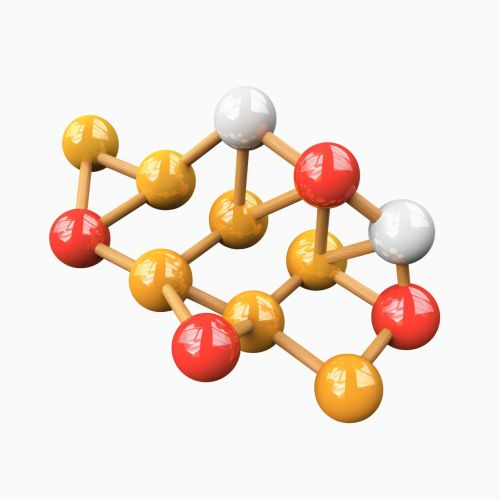Paracetamol
Introduction
Paracetamol, also known as acetaminophen, is a widely used over-the-counter analgesic and antipyretic medication. It is commonly used to treat mild to moderate pain and fever. Paracetamol is often found in combination with other medications in both prescription and non-prescription drugs. It is considered one of the most essential medications in a basic health system due to its efficacy and safety profile when used appropriately.
Chemical Properties
Paracetamol's chemical name is N-(4-hydroxyphenyl)acetamide. It has the molecular formula C8H9NO2 and a molecular weight of 151.16 g/mol. The compound is a white, crystalline powder that is sparingly soluble in water and freely soluble in alcohol. Paracetamol exhibits weak acidic properties with a pKa of 9.5.


Pharmacodynamics
Paracetamol works primarily by inhibiting the enzyme cyclooxygenase (COX), particularly COX-2, in the central nervous system. This inhibition results in a decreased synthesis of prostaglandins, which are compounds involved in the mediation of pain and fever. Unlike nonsteroidal anti-inflammatory drugs (NSAIDs), paracetamol does not significantly inhibit COX-1, which is why it lacks anti-inflammatory properties and has a lower risk of gastrointestinal side effects.
Pharmacokinetics
Absorption
Paracetamol is rapidly absorbed from the gastrointestinal tract, with peak plasma concentrations occurring within 30 to 60 minutes after oral administration. The bioavailability of paracetamol is approximately 70-90%.
Distribution
The drug is widely distributed throughout the body, including the central nervous system. Paracetamol crosses the blood-brain barrier and the placenta. It is also found in breast milk in small amounts. The volume of distribution is approximately 0.9 L/kg.
Metabolism
Paracetamol is primarily metabolized in the liver through three major pathways: glucuronidation, sulfation, and oxidation. The majority of the drug undergoes conjugation with glucuronic acid and sulfuric acid to form non-toxic metabolites. A small fraction is oxidized by the cytochrome P450 enzyme system, particularly CYP2E1, to form a reactive intermediate known as N-acetyl-p-benzoquinone imine (NAPQI). NAPQI is usually detoxified by conjugation with glutathione.
Excretion
The metabolites of paracetamol are excreted primarily in the urine. Approximately 85-95% of a dose is excreted within 24 hours, with less than 5% excreted unchanged. The elimination half-life of paracetamol is about 2 to 3 hours in healthy adults.
Clinical Uses
Paracetamol is indicated for the relief of mild to moderate pain and fever. It is commonly used to treat conditions such as headaches, muscle aches, arthritis, backaches, toothaches, colds, and fevers. It is also used in combination with other medications for the management of more severe pain, such as post-surgical pain and cancer pain.
Safety and Adverse Effects
Paracetamol is generally well-tolerated when used at recommended doses. However, overdose can lead to severe liver damage and potentially fatal hepatic failure. The maximum recommended daily dose for adults is 4 grams, although some guidelines suggest a lower limit to minimize the risk of liver toxicity. Chronic alcohol consumption, fasting, and the use of other hepatotoxic drugs can increase the risk of paracetamol-induced liver damage.
Common adverse effects include nausea, vomiting, and allergic reactions. Rare but serious side effects include Stevens-Johnson syndrome, toxic epidermal necrolysis, and acute generalized exanthematous pustulosis.
Mechanism of Toxicity
Paracetamol toxicity occurs when the normal metabolic pathways are saturated, leading to an increased formation of NAPQI. When glutathione stores are depleted, NAPQI binds to cellular proteins, causing oxidative stress and cell death. The liver is particularly susceptible to this damage due to its role in drug metabolism.
Treatment of Overdose
The primary treatment for paracetamol overdose is the administration of N-acetylcysteine (NAC), which replenishes glutathione stores and enhances the detoxification of NAPQI. NAC is most effective when given within 8 hours of ingestion but can still provide benefits if administered later. Activated charcoal may be used to reduce absorption if the patient presents within 1-2 hours of ingestion.
Drug Interactions
Paracetamol can interact with various medications, potentially altering its efficacy and safety profile. Notable interactions include:
- Alcohol: Increases the risk of liver toxicity.
- Warfarin: Prolonged use of paracetamol may enhance the anticoagulant effect of warfarin, increasing the risk of bleeding.
- Enzyme inducers (e.g., rifampicin, carbamazepine): May increase the formation of NAPQI, raising the risk of liver damage.
- Enzyme inhibitors (e.g., cimetidine): May reduce the metabolism of paracetamol, leading to increased plasma levels.
Special Populations
Pediatrics
Paracetamol is commonly used in pediatric populations for the treatment of pain and fever. Dosage recommendations are based on the child's weight, with typical doses ranging from 10-15 mg/kg every 4-6 hours, not exceeding 60 mg/kg per day.
Pregnancy and Lactation
Paracetamol is considered safe for use during pregnancy and lactation when used at recommended doses. It is classified as a Category B drug by the FDA, indicating that animal studies have not demonstrated a risk to the fetus, and there are no adequate and well-controlled studies in pregnant women.
Elderly
Elderly patients may have altered pharmacokinetics due to age-related changes in liver and kidney function. Dose adjustments may be necessary to avoid toxicity.
Formulations and Dosage
Paracetamol is available in various formulations, including tablets, capsules, liquid suspensions, suppositories, and intravenous solutions. The choice of formulation depends on the patient's age, condition, and preference.
Oral Formulations
- Tablets and Capsules: Commonly available in strengths of 325 mg, 500 mg, and 650 mg.
- Liquid Suspensions: Typically contain 160 mg/5 mL for pediatric use.
Rectal Formulations
- Suppositories: Available in strengths of 125 mg, 250 mg, and 500 mg.
Intravenous Formulations
- IV Solutions: Used for the management of moderate to severe pain and fever in hospitalized patients. The standard dose is 1 gram every 6 hours, not exceeding 4 grams per day.
Regulatory Status
Paracetamol is available over-the-counter in many countries and is included in the World Health Organization's List of Essential Medicines. It is regulated by various health authorities, including the FDA in the United States and the MHRA in the United Kingdom.
Research and Development
Ongoing research is focused on understanding the detailed mechanisms of paracetamol's analgesic and antipyretic effects, as well as its potential anti-inflammatory properties. Studies are also investigating the development of new formulations and delivery methods to enhance efficacy and reduce the risk of toxicity.
Conclusion
Paracetamol is a widely used and effective medication for the treatment of pain and fever. Its favorable safety profile and availability in various formulations make it a valuable option for patients of all ages. However, it is essential to use paracetamol within recommended doses to avoid the risk of serious adverse effects, particularly liver toxicity.
